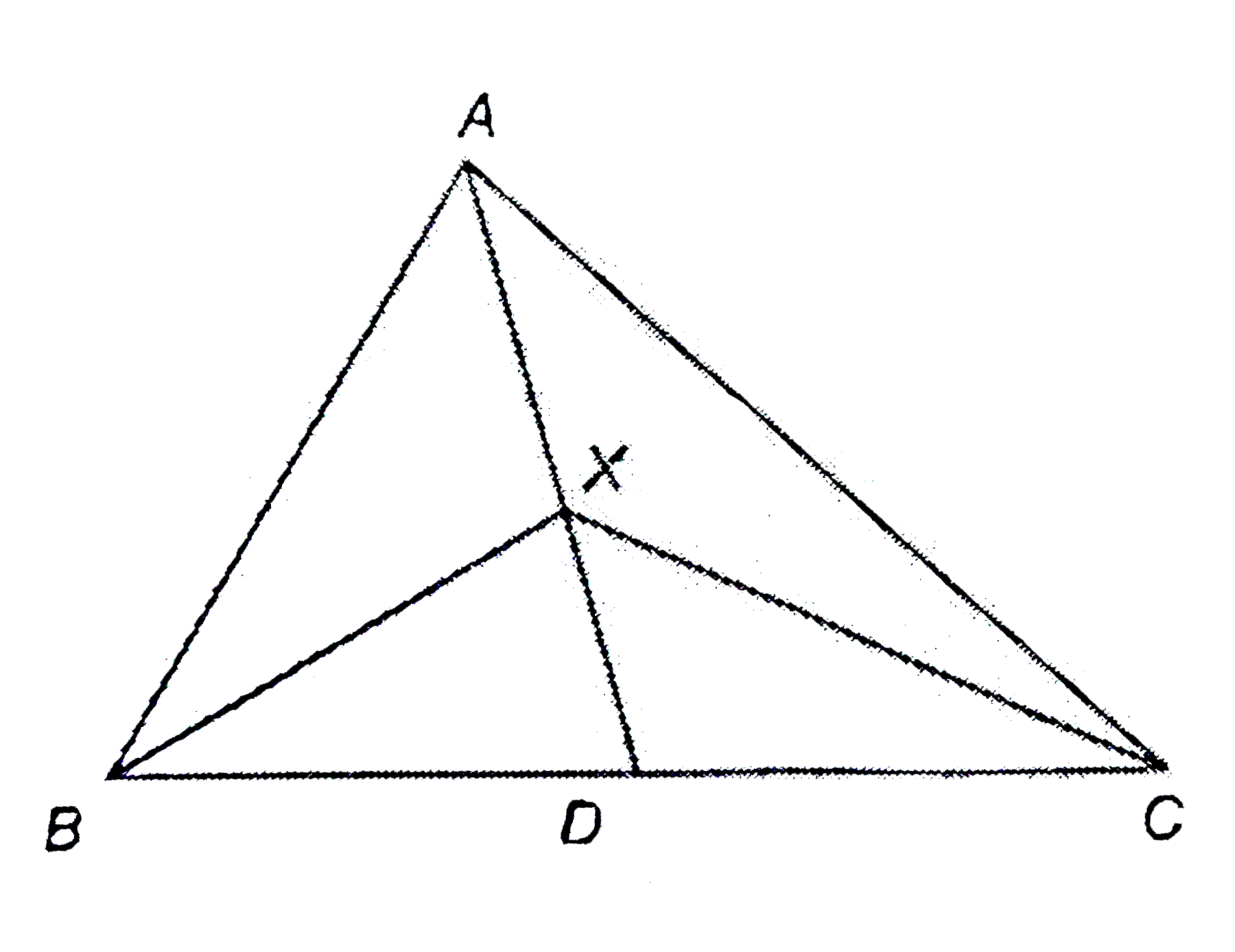Any point D is taken on the side BC of a ΔABC and AD is produced to E such that AD = DE , prove that area of ΔBCE= area of ΔABC,
To prove that the area of triangle BCE is equal to the area of triangle ABC, we will follow these steps:
Step 1: Draw the Triangle
Draw triangle ABC with point D on side BC. Extend line AD to point E such that AD = DE.
Step 2: Identify Medians
Since AD = DE, we can say that BD is a median of triangle ABE. This is because a median divides a triangle into two triangles of equal area.
Step 3: Area of Triangle ABE
From the property of medians, we can state:
Area of △ABD=Area of △BED(1)
Step 4: Identify Another Median
Now, in triangle ACE, since AD = DE, we can also say that CD is a median of triangle CED.
Step 5: Area of Triangle CED
Using the same property of medians, we can state:
Area of △ACD=Area of △CED(2)
Step 6: Add the Areas
Now, we will add equations (1) and (2):
Area of △ABD+Area of △ACD=Area of △BED+Area of △CED
Step 7: Relate to Triangle ABC and BCE
The left side of the equation represents the area of triangle ABC:
Area of △ABC=Area of △BED+Area of △CED
The right side of the equation represents the area of triangle BCE:
Area of △BCE=Area of △BED+Area of △CED
Conclusion
Thus, we can conclude:
Area of △ABC=Area of △BCE
Draw triangle ABC with point D on side BC. Extend line AD to point E such that AD = DE.
Since AD = DE, we can say that BD is a median of triangle ABE. This is because a median divides a triangle into two triangles of equal area.
From the property of medians, we can state:
Area of △ABD=Area of △BED(1)
Now, in triangle ACE, since AD = DE, we can also say that CD is a median of triangle CED.
Using the same property of medians, we can state:
Area of △ACD=Area of △CED(2)
Now, we will add equations (1) and (2):
Area of △ABD+Area of △ACD=Area of △BED+Area of △CED
The left side of the equation represents the area of triangle ABC:
Area of △ABC=Area of △BED+Area of △CED
The right side of the equation represents the area of triangle BCE:
Area of △BCE=Area of △BED+Area of △CED
Thus, we can conclude:
Area of △ABC=Area of △BCE
Topper's Solved these Questions
- CHAPTERWISE REVISION (STAGE 3) BOOK - ICSECHAPTER - CHAPTERWISE REVISION (STAGE 3) EXERCISE - CIRCLE
7 Videos
- CHAPTERWISE REVISION (STAGE 3) BOOK - ICSECHAPTER - CHAPTERWISE REVISION (STAGE 3) EXERCISE - STATISTICS
5 Videos
- CHAPTERWISE REVISION (STAGE 3) BOOK - ICSECHAPTER - CHAPTERWISE REVISION (STAGE 3) EXERCISE - CONSTRUCTIONS OF POLYGONS
4 Videos
- CHAPTERWISE REVISION (STAGE 1) BOOK - ICSECHAPTER - CHAPTERWISE REVISION (STAGE 1) EXERCISE - Graphical solution
10 Videos
- CIRCLEBOOK - ICSECHAPTER - CIRCLEEXERCISE - EXERCISE 17(D)
12 Videos
Similar Questions
In a ΔABC, BD is the median to the side AC, BD is produced to E such that BD = DE. Prove that : AE is parallel to BC.
View SolutionIf D is a Point on the side BC of a ΔABC such that AD bisects ∠BAC. Then
View SolutionIn the adjoining figure, D is the mid-point of side AB of ΔABC and P be any point on side BC. If CQ∣∣PD, then prove that:
area of ΔBPQ=12× area of ΔABC

View SolutionIn a triangle ABC,D is the mid - point of BC, AD is produced upto E so that DE = AD.
Prove that :
AB=EC
View SolutionIf D id the mid-point of the side BC of a triangle ABC and AD is perpendicular to AC , then
View SolutionIn triangle ABC, D is a point in side BC such that 2BD=3DC. Prove that the area of triangle ABD = 35×Area ofΔABC
View SolutionThe medians of ΔABC intersect at point G. Prove that:
area of ΔAGB=13× area of ΔABC
View SolutionIn ΔABC ,D is a point in side AB and E is a point in AC. If DE is parallel to BC, and BE and CD intersect each other at point 0, prove that:
area (ΔOBD)= area (ΔOCE)
View SolutionIn the adjoining figure, AD is the median of ΔABC and X be any point on side AD. Prove that:
area (ΔABX)= area (ΔACX)

View SolutionΔABCandΔDBC are on same base BC and their vertices A and D are on opposite sides of BC. It is given that:
area of ΔABC= area of ΔDBC
Prove that BC bisects the line segment AD.
View Solution
